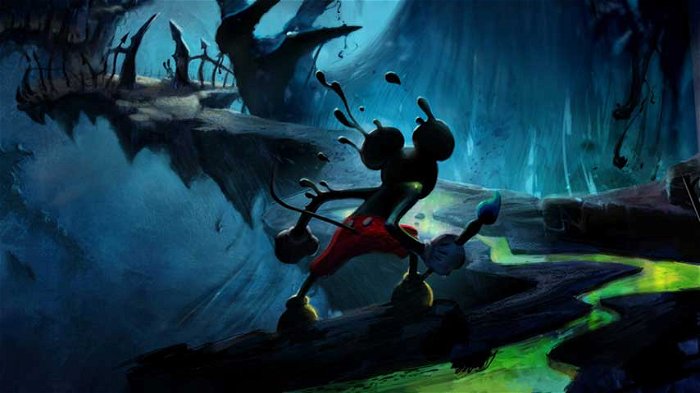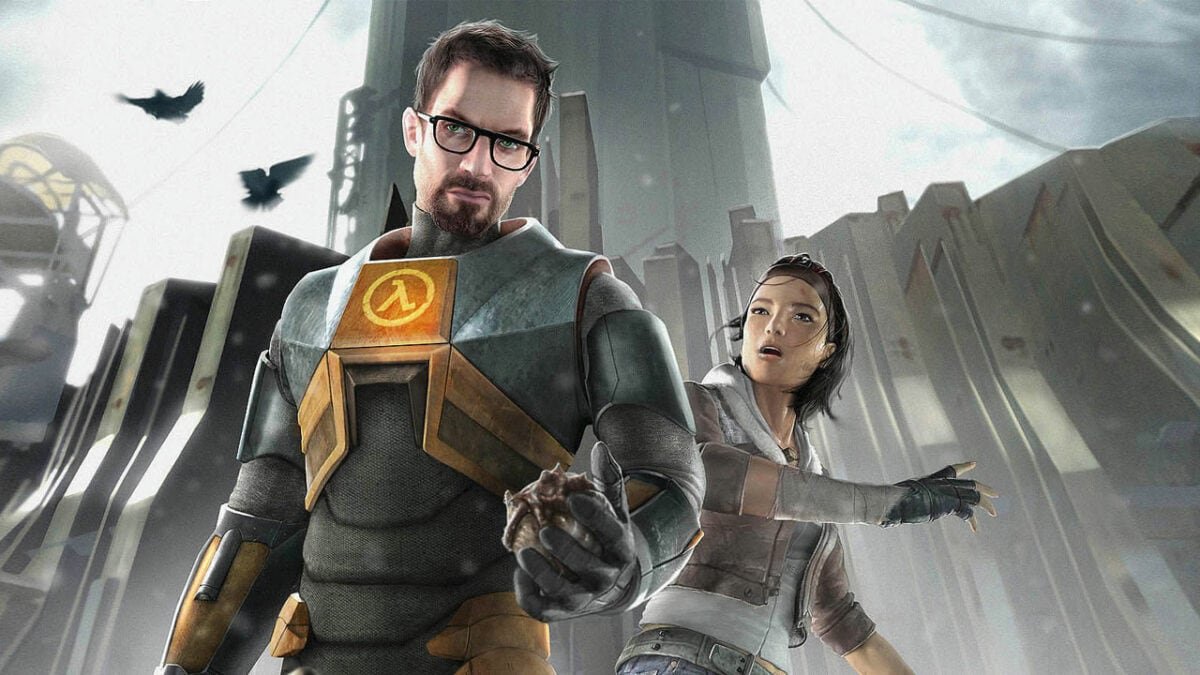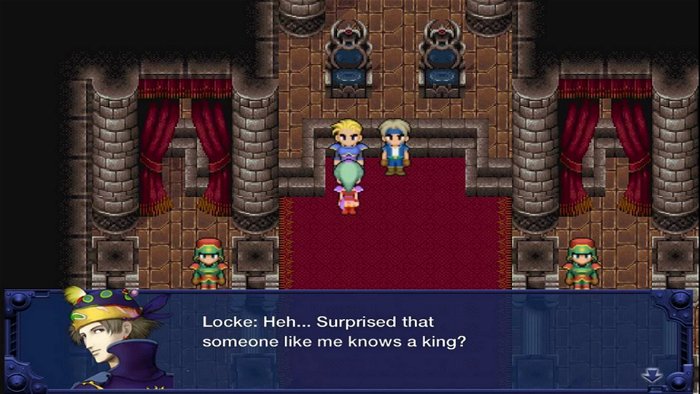Dystopias have been a popular setting in videogames for quite some time now, and their introduction helped to kick start a new wave of mature, interactive storytelling. Game makers were finally unafraid to explore more mature and nuanced themes like government control, corruption, unfair societal norms, and the importance of freedom. Ever since this setting has been on the rise, having a thought-provoking story in your game is quickly becoming the norm.
The first major title to truly feature a dystopian world is actually a beloved Japanese role-playing game. Square Enix’s Final Fantasy VI, when it released in 1994, was a complete departure not only for the franchise, but for the JRPG genre as well. Square finally moved away from the traditional, high fantasy setting and instead chose to explore a modern, darker steampunk aesthetic. Its famous—nd beautiful—opening scene, in which the main characters are riding on mechs in snowy tundra, immediately set the tone. Your heroes are a group of rebels who want to overthrow an imperial dictatorship.
The inspiration for the world and level design stems from the Second Industrial Revolution, with the game’s society paralleling that of the latter half of the 19th century. Instead of exploring medieval castles, you’ll spot railroads, steamships, and coal mining operations. Final Fantasy VI proved to be a refreshing departure and change of pace for Final Fantasy, and Square continued this steampunk trend with Final Fantasy VII and VIII. VII’s bleak world—controlled by the infamous Shinra Corporation—is instantly recognizable with its green, polluted skies. Square Enix gave people a fine taste of the type of stories that can be told with a dystopian backdrop.

In 2000, creative director Warren Spector, the man behind Epic Mickey, and developer Ion Storm released the first Deus Ex title. The game is set in 2025, with the central plot revolving around rookie agent JC Denton and his mission to combat terrorist forces. Deus Ex’s world is one that’s steadily slipping into chaos, and Denton eventually becomes involved in a conspiracy. He encounters organizations such as the Illuminati and the Hong Kong Triads. The story is complex and filled with plenty of important choices you must make that heavily impact the world and characters.
Deus Ex received universal critical acclaim due to its well-written plot and gameplay that encourages player choice. The game has spawned a direct sequel in Deus Ex: Invisible War—a great game that still fails to live up to its predecessor—and two prequels. 2011’s Deus Ex: Human Revolution is set 25 years before the first title. New character Adam Jensen, like JC Denton, goes up against powerful terrorist groups and private organizations that are fighting for world domination.
Developer Eidos Montreal expertly captures the original game’s brooding tone and philosophical themes, and Human Revolution’s futuristic cities give players a glimpse of an awful future filled with poverty and racism. It continually raises the question of whether or not humanity’s reach has exceeded its grasp. Meaning, maybe it’s time for humans to stop technologically evolving? Human Revolution‘s recent sequel, Mankind Divided, looks just as stunningly gruesome and brooding, with major gameplay improvements and more player choice.
Following the first Deus Ex was a torrent of dystopian videogames. Valve took a stab at it with Half Life 2, which, like Deus Ex, pits a “normal” mortal man against a mysterious, corrupt, and impossibly powerful totalitarian government. The game presents a fascinating alternate history of Earth in which the Combine, an oppressive multidimensional empire, is harvesting the resources of the planet and the human race.

Beloved main character Gordon Freeman, with help from resistance fighter Alyx Vance and her father, Dr. Eli Vance, sets out to overthrow the government and find a way to defeat the Combine. Half-Life 2, and its two episodic sequels depict Earth and the human race as slaves who are constantly being experimented on and used. The game remains a fan favourite, with many fans still clamouring for that final third entry.
Naughty Dog even got in on the dystopian action as well with the surprising Jak II. This sequel to the more colourful and whimsical Jak and Daxter is a drastic shift in tone and ideas. Jak II isn’t just a simple 3D platformer but rather takes its inspiration from Grand Theft Auto. Players can shoot enemies with a few distinct guns and even hijack flying motorcycle-like vehicles from citizens. In the game players will explore the messed up Haven City, which is ruled by vicious dictator Baron Praxis and his Krimzon Guard law enforcers. Jak is also a much more troubled character in this sequel, as he struggles to fend off his darker alter ego.
After a few years of studios producing nearly identical dystopian videogames, Irrational Games’ and creative director Ken Levine’s Bioshock came along. Containing obvious influences from Ayn Rand’s Atlas Shrugged, Bioshock depicts an underwater city that was supposed to be a stunning utopia but eventually collapsed due to the residents’ inability to stop craving power. Rapture is one of the most beautiful and detailed cities in videogames, and is really the first time a setting outshined almost everything else in a game.
Bioshock, since it released in 2007, has inspired a slew of game makers. Arkane Studios’ Dishonored is a prime example as it sports a similar art style and gameplay, with a dystopian city called Dunwall that obviously pays quite a few homages to Rapture. The sequel seems to be continuing the same trend. Upcoming indie game We Happy Few is another title that draws heavy inspiration from Bioshock. It employs nearly identical first-person gameplay with an emphasis on exploration, and takes place in a world where people take pills to keep themselves “happy.” When the main character decides to refrain from taking his daily dosage, he begins to see just how awful his surroundings and life really are.

In 2008, EA and DICE released Mirror’s Edge which, like Bioshock, introduced an interesting new way to visually express a dystopian city. The game’s setting looks clean with monotone art design. White, red, and yellow are the dominant colors, and there is a serious lack of individualism and creative expression. DICE showed that a world doesn’t need be dirty and dark for it to feel vile, dangerous, and suffocating.
It’s been 20 years since Final Fantasy VI launched and the dystopian trend doesn’t seem to be slowing down anytime soon. Horizon: Zero Dawn, Final Fantasy XV, Days Gone, Deus Ex: Mankind Divided, and plenty more are all looking to put their own twist on ravaged and troubled worlds.







